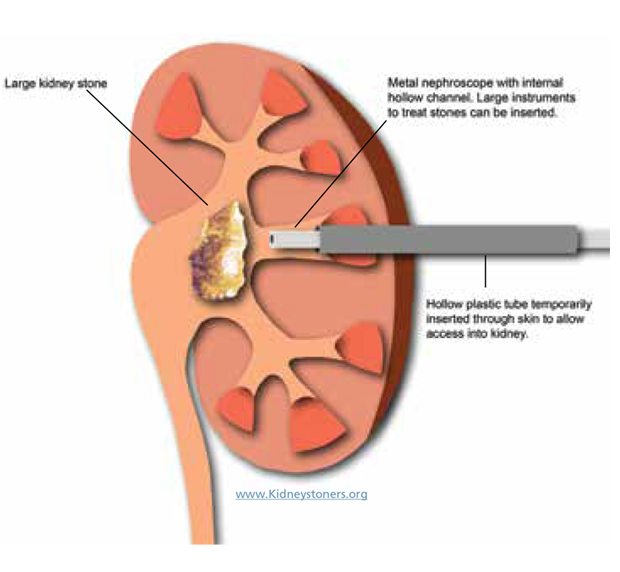
Percutaneous Nephrolithotomy (PCNL)* is the best treatment for large stones in the kidney . General anesthesia is needed to do a PCNL . PCNL involves making a half-inch incision* (cut) in the back or side, just large enough to allow a rigid telescope (nephroscope) to be passed into the hollow center part of the kidney where the stone is located .
An instrument passed through the nephroscope breaks up the stone and suctions out the pieces . The ability to suction pieces makes PCNL the best treatment choice for large stones .
After the PCNL, a tube is usually left in the kidney to drain urine into a bag outside the body . This will also help stop any bleeding . The tube is left in overnight or for a few days . You may have to stay in the hospital overnight after this operation .
Your urologist may choose to do X-rays while you are still in the hospital to see if any stone pieces remain . If there are any, your urologist may want to look back into the kidney with a telescope again to remove them . You can begin normal activities after about one to two weeks .
Other SurgeryOther kidney surgery is rarely used to remove stones . Open, laparoscopic* or robotic surgery may be used only if all other less invasive procedures fail .
Frequently Asked Questions
How do I manage my kidney stone along with my other health problems, such as diabetes and/or a heart disorder
Diet changes recommended for heart conditions also often help prevent stones. A healthy diet with lots of fresh fruits and vegetables and less animal protein and salt can help avoid stones and other conditions. You can learn more from your health care provider or dietician. Keeping a normal weight can also help avoid diabetes and stones.
